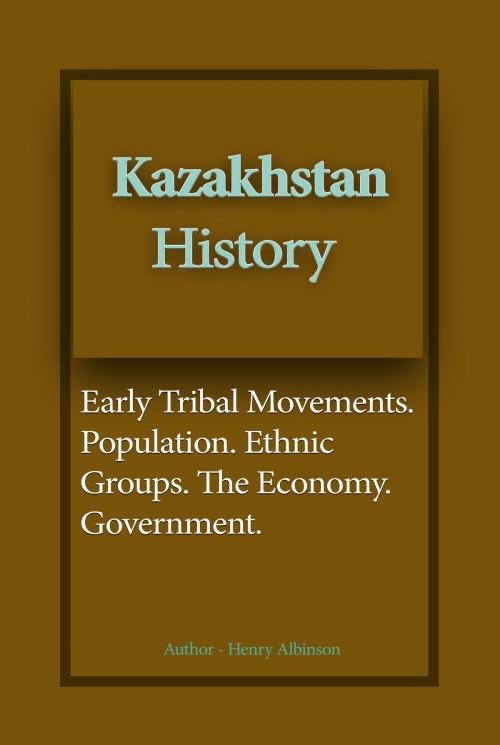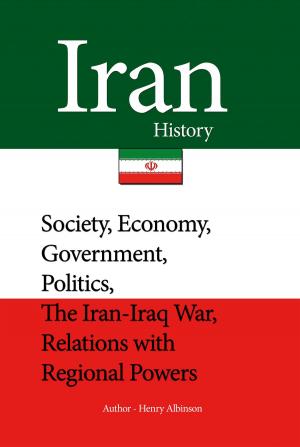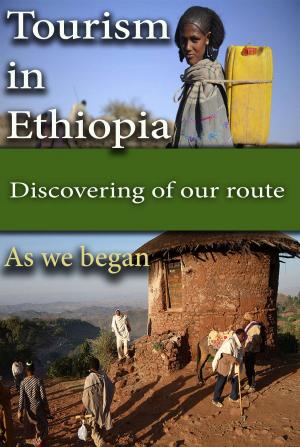| Author: | Henry Albinson | ISBN: | 9781311884671 |
| Publisher: | Sonit Education Academy | Publication: | June 25, 2016 |
| Imprint: | Smashwords Edition | Language: | English |
| Author: | Henry Albinson |
| ISBN: | 9781311884671 |
| Publisher: | Sonit Education Academy |
| Publication: | June 25, 2016 |
| Imprint: | Smashwords Edition |
| Language: | English |
The History of Kazakhstan book includes, Kazakhstan people and culture, Kazakhstan government system, Kazakhstan Russia relation, Kazakhstan political system
Humans have inhabited present-day Kazakhstan since the earliest Stone Age, generally pursuing the nomadic pastoralism for which the region's climate and terrain are best suited. The earliest well-documented state in the region was the Turkic Kaganate, which came into existence in the sixth century A.D. The Qarluqs, a confederation of Turkic tribes, established a state in what is now eastern Kazakhstan in 766. In the eighth and ninth centuries, portions of southern Kazakstan were conquered by Arabs, who also introduced Islam. The Oghuz Turks controlled western Kazakhstan from the ninth through the eleventh centuries; the Kimak and Kipchak peoples, also of Turkic origin, controlled the east at roughly the same time. The large central desert of Kazakstan is still called Dashti-Kipchak, or the Kipchak Steppe.
In the late ninth century, the Qarluq state was destroyed by invaders who established the large Qarakhanid state, which occupied a region known as Transoxania, the area north and east of the Oxus River (the present-day Syrdariya), extending into what is now China. Beginning in the early eleventh century, the Qarakhanids fought constantly among themselves and with the Seljuk Turks to the south. In the course of these conflicts, parts of present-day Kazakhstan shifted back and forth between the combatants. The Qarakhanids, who accepted Islam and the authority of the Arab Abbasid caliphs of Baghdad during their dominant period, were conquered in the 1130s by the Karakitai, a Turkic confederation from northern China. In the mid-twelfth century, an independent state of Khorazm (also seen as Khorezm or Khwarazm) along the Oxus River broke away from the weakening Karakitai, but the bulk of the Karakitai state lasted until the invasion of Chinggis (Genghis) Khan in 1219-2
The History of Kazakhstan book includes, Kazakhstan people and culture, Kazakhstan government system, Kazakhstan Russia relation, Kazakhstan political system
Humans have inhabited present-day Kazakhstan since the earliest Stone Age, generally pursuing the nomadic pastoralism for which the region's climate and terrain are best suited. The earliest well-documented state in the region was the Turkic Kaganate, which came into existence in the sixth century A.D. The Qarluqs, a confederation of Turkic tribes, established a state in what is now eastern Kazakhstan in 766. In the eighth and ninth centuries, portions of southern Kazakstan were conquered by Arabs, who also introduced Islam. The Oghuz Turks controlled western Kazakhstan from the ninth through the eleventh centuries; the Kimak and Kipchak peoples, also of Turkic origin, controlled the east at roughly the same time. The large central desert of Kazakstan is still called Dashti-Kipchak, or the Kipchak Steppe.
In the late ninth century, the Qarluq state was destroyed by invaders who established the large Qarakhanid state, which occupied a region known as Transoxania, the area north and east of the Oxus River (the present-day Syrdariya), extending into what is now China. Beginning in the early eleventh century, the Qarakhanids fought constantly among themselves and with the Seljuk Turks to the south. In the course of these conflicts, parts of present-day Kazakhstan shifted back and forth between the combatants. The Qarakhanids, who accepted Islam and the authority of the Arab Abbasid caliphs of Baghdad during their dominant period, were conquered in the 1130s by the Karakitai, a Turkic confederation from northern China. In the mid-twelfth century, an independent state of Khorazm (also seen as Khorezm or Khwarazm) along the Oxus River broke away from the weakening Karakitai, but the bulk of the Karakitai state lasted until the invasion of Chinggis (Genghis) Khan in 1219-2















